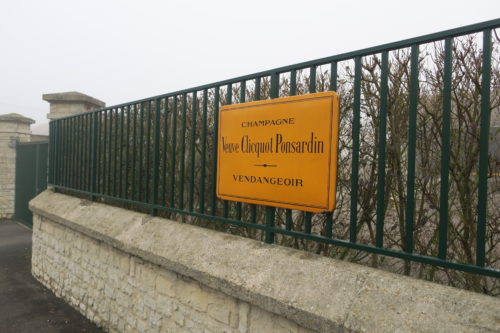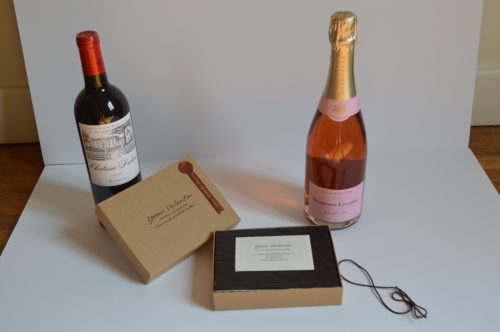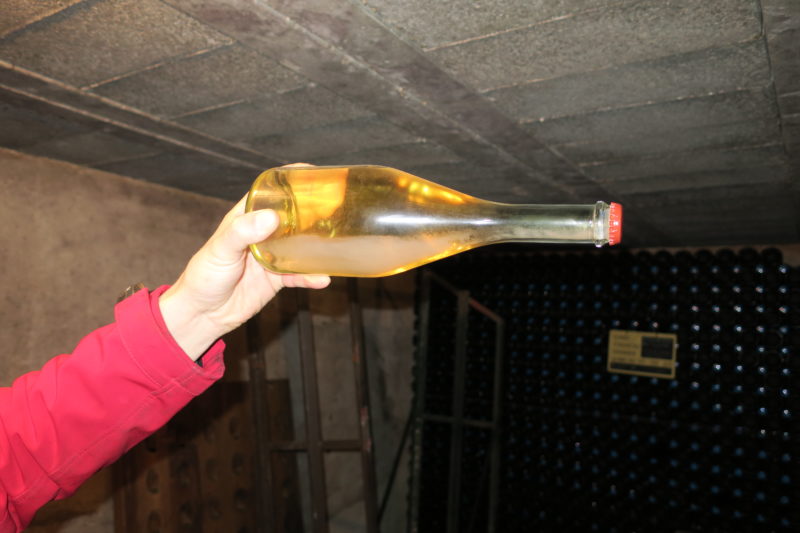 We all drink Champagne from time to time, however few of us understand how to buy Champagne. This is a an educational piece on the various types of Champagne one can find on the market. I buy primarily for my clients who appreciate it, but also I buy as it is the perfect choice for my Gift-Boxes paired with chocolate truffles. I find there is a high demand for the better quality wines which are not as commercially driven as the more famous Champagnes such as Veuve-Cliquot. Education is king and hopefully these few paragraphs will help you discern the better bubbles next time you are in the market.
We all drink Champagne from time to time, however few of us understand how to buy Champagne. This is a an educational piece on the various types of Champagne one can find on the market. I buy primarily for my clients who appreciate it, but also I buy as it is the perfect choice for my Gift-Boxes paired with chocolate truffles. I find there is a high demand for the better quality wines which are not as commercially driven as the more famous Champagnes such as Veuve-Cliquot. Education is king and hopefully these few paragraphs will help you discern the better bubbles next time you are in the market. Champagne is roughly ninety miles east of Paris. It is famous for growing primarily three different grape varietals that make the famous sparkling wine. The three varietals are Pinot Noir, Pinot Meunier and Chardonnay. There is a word the french use to denote the standard level in wine and some foods: Cru and is pronounced ‘crew’ as in J Crew. This word can be seen on french epicurean products such as cheese, olive oil and wine. Champagne can be measured by its Cru system. The basic commercial Champagne will always be branded Champagne, but that’s it. The next level up is Premier Cru and then the highest level is known as Grand Cru.
Champagne is roughly ninety miles east of Paris. It is famous for growing primarily three different grape varietals that make the famous sparkling wine. The three varietals are Pinot Noir, Pinot Meunier and Chardonnay. There is a word the french use to denote the standard level in wine and some foods: Cru and is pronounced ‘crew’ as in J Crew. This word can be seen on french epicurean products such as cheese, olive oil and wine. Champagne can be measured by its Cru system. The basic commercial Champagne will always be branded Champagne, but that’s it. The next level up is Premier Cru and then the highest level is known as Grand Cru. Champagne is divided into subregions such as the Montagne de Reims, Côtes des Noirs, Côtes des Blancs and the Aube which is better known as the Côtes des Bars region. These are all located in a few different counties or departments (the french word for province or state). Looking at the map, there is an area in the middle of Champagne stretching from east to west known as the Montagne de Reims. Directly below this demarcation line is the Marne county (scene of the fiercest and most horrific WW1 battles). All of the premier cru and grand cru wines come from the Marne county. The number one reason: it’s warmer and the second reason is the soil. I know we are only talking a few miles, but this is hugely important. The difference between the villages that make the various standards of bubbly boils down to a few different criteria; microclimatic idiosyncrasies (exposure to the sun & elements can come under this heading), soil-type and drainage, and finally elevation. Above the Montagne de Reims heading toward Reims itself, the land gets pretty flat. Elevation provides a cool breeze during the night, the secret element to good Champagne is the chalky alkaline bedrock which provides the number one ingredient for good Champagne and that is acidity, however the trick to good wine, any wine: warm summer days and even cooler summer nights. Flatter lands tend not to drain, and good wine comes from vines that undergo a modicum of water stress on the slopes. The rare commodity all good Champagne makers are looking for is phenolic ripeness and acidity. Acidity allows the wine to age and lends character. If the weather is too warm, the vines will go into cardiac arrest and the acidity will disappear in the grapes. This is the death of a burgeoning Champagne.
Champagne is divided into subregions such as the Montagne de Reims, Côtes des Noirs, Côtes des Blancs and the Aube which is better known as the Côtes des Bars region. These are all located in a few different counties or departments (the french word for province or state). Looking at the map, there is an area in the middle of Champagne stretching from east to west known as the Montagne de Reims. Directly below this demarcation line is the Marne county (scene of the fiercest and most horrific WW1 battles). All of the premier cru and grand cru wines come from the Marne county. The number one reason: it’s warmer and the second reason is the soil. I know we are only talking a few miles, but this is hugely important. The difference between the villages that make the various standards of bubbly boils down to a few different criteria; microclimatic idiosyncrasies (exposure to the sun & elements can come under this heading), soil-type and drainage, and finally elevation. Above the Montagne de Reims heading toward Reims itself, the land gets pretty flat. Elevation provides a cool breeze during the night, the secret element to good Champagne is the chalky alkaline bedrock which provides the number one ingredient for good Champagne and that is acidity, however the trick to good wine, any wine: warm summer days and even cooler summer nights. Flatter lands tend not to drain, and good wine comes from vines that undergo a modicum of water stress on the slopes. The rare commodity all good Champagne makers are looking for is phenolic ripeness and acidity. Acidity allows the wine to age and lends character. If the weather is too warm, the vines will go into cardiac arrest and the acidity will disappear in the grapes. This is the death of a burgeoning Champagne. The towns in the areas mentioned above, typical to tradition were recognized many moons ago for the quality of their grapes. So in actual fact, it is indeed the villages that are the crus and not the individual wine makers or their estates. The growers are the lucky custodians of these estates which are situated in the grand cru Villages. The more branded Champagnes tend to buy their grapes for their better wines from a select few villages. I don’t expect you to know these villages and that is indeed the reason why it’s so hard to know what you are buying. In LA speak that would be like expecting a frenchman straight off the plane to know where to find the best tacos in LA, get me? There are over 318 accredited Champagne producing villages of which 17 are grand cru and 44 are premier cru. Mathematically they make perhaps less than 9% of total production and in fact Blanc de Blancs Champagnes from the Côtes des Blancs make up just 3% of total production.
The towns in the areas mentioned above, typical to tradition were recognized many moons ago for the quality of their grapes. So in actual fact, it is indeed the villages that are the crus and not the individual wine makers or their estates. The growers are the lucky custodians of these estates which are situated in the grand cru Villages. The more branded Champagnes tend to buy their grapes for their better wines from a select few villages. I don’t expect you to know these villages and that is indeed the reason why it’s so hard to know what you are buying. In LA speak that would be like expecting a frenchman straight off the plane to know where to find the best tacos in LA, get me? There are over 318 accredited Champagne producing villages of which 17 are grand cru and 44 are premier cru. Mathematically they make perhaps less than 9% of total production and in fact Blanc de Blancs Champagnes from the Côtes des Blancs make up just 3% of total production. What do the labels tell you? The village where the producer is located, the cru level and the year if it’s a vintage Champagne. There are other commercial notations such as Grand Cuvee and this is as I mentioned above a brand name within itself. Dom Perignon is a Champagne owned by Moet, and this is their Grand Cuvee. The word Cuvee means vat, which is a fermentation vessel. You see, when the grapes that make the better wines are picked, they are picked row by row and plot by plot. They are usually fermented separately and there are three parts to the juice derived from the process. The best juice is known as the Tete de Cuvee and these wines are blended from wines from the other plots to give the Grand Cuvee or in layman’s terms the creme de la creme. Veuve-Clicquot’s Grand Cuvee is know as the ‘Grande Dame’. Incidentally, LVMH owns Moet,Veuve and Krug.. go figure.
What do the labels tell you? The village where the producer is located, the cru level and the year if it’s a vintage Champagne. There are other commercial notations such as Grand Cuvee and this is as I mentioned above a brand name within itself. Dom Perignon is a Champagne owned by Moet, and this is their Grand Cuvee. The word Cuvee means vat, which is a fermentation vessel. You see, when the grapes that make the better wines are picked, they are picked row by row and plot by plot. They are usually fermented separately and there are three parts to the juice derived from the process. The best juice is known as the Tete de Cuvee and these wines are blended from wines from the other plots to give the Grand Cuvee or in layman’s terms the creme de la creme. Veuve-Clicquot’s Grand Cuvee is know as the ‘Grande Dame’. Incidentally, LVMH owns Moet,Veuve and Krug.. go figure.
 Blanc de Blancs refers to the white or clear juice from the Chardonnay grapes and Blanc de Noirs; the clear juice from the Pinot Noir grapes. I personally love Blanc de Blancs as the better Champagnes have a razor sharp taste profile. They are extremely fine. The Pinot Noir based Champagnes are also exceptionally fine, and I find are better accompanied by food.
Blanc de Blancs refers to the white or clear juice from the Chardonnay grapes and Blanc de Noirs; the clear juice from the Pinot Noir grapes. I personally love Blanc de Blancs as the better Champagnes have a razor sharp taste profile. They are extremely fine. The Pinot Noir based Champagnes are also exceptionally fine, and I find are better accompanied by food.
 I would like to talk a little about the french word terroir. The best parcels are more refined for cultivating the most flavorful grapes, and something that the french refer to which is an invisible attribute known as terroir. What is terroir?
I would like to talk a little about the french word terroir. The best parcels are more refined for cultivating the most flavorful grapes, and something that the french refer to which is an invisible attribute known as terroir. What is terroir?
 There are many different interpretations, but I believe it is the soil, weather, elevation etc… and perhaps moreover it’s the people and their passion. The terroir in Napa is different to the terroir in Sonoma. It’s an invisible know-how. In order to buy the better Champagnes it’s all about the terroir. That’s what I am here for.. Please ask, I will be delighted to help. Profites-ons !!!
There are many different interpretations, but I believe it is the soil, weather, elevation etc… and perhaps moreover it’s the people and their passion. The terroir in Napa is different to the terroir in Sonoma. It’s an invisible know-how. In order to buy the better Champagnes it’s all about the terroir. That’s what I am here for.. Please ask, I will be delighted to help. Profites-ons !!!
Champagne, for the buyer who wants to understand a little more…



